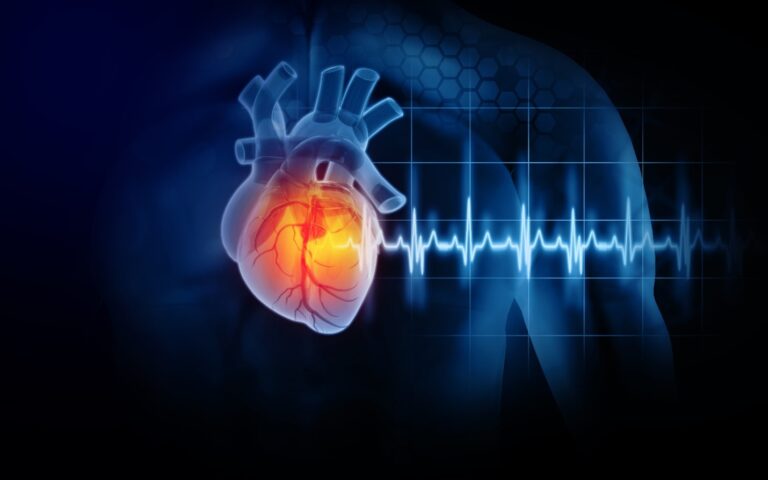Guarding Your Heart: The Guide to Early Detection of Heart Disease

Welcome to our exploration of a topic close to our hearts – the early detection of heart disease. In this blog, we’ll uncover the crucial signs, symptoms, and preventative measures that can make a significant difference in preserving heart health and ensuring a longer, more vibrant life.
The Stakes of Heart Health
“Understanding the Silent Threat: Heart Disease’s Impact on Lives”
- Heart disease, also known as cardiovascular disease, is a global health concern with widespread prevalence and significant consequences. Understanding the scope of this condition is crucial for public health awareness and preventive efforts.
- Heart disease is the leading cause of death worldwide, affecting millions of people. According to the World Health Organization (WHO), an estimated 17.9 million deaths occur annually due to cardiovascular diseases. Prevalence rates vary across regions, with higher rates often observed in economically developed countries. Lifestyle factors, genetics, and access to healthcare contribute to these regional variations.
- Heart disease will not only cause mortality, but also cause reduced quality of life, economic burden, it will impact your mental health, and it will lead to various complications.
- Early detection of heart disease plays a pivotal role in preventing severe complications and improving overall outcomes. Recognizing the signs and symptoms at an early stage allows for timely intervention and management, reducing the risk of life-threatening events.
Know Your Numbers
“Behind the Scenes: Key Markers for Heart Health”
- Understanding and monitoring vital indicators is crucial for maintaining heart health and preventing cardiovascular disease. Here’s a brief overview of each indicator, why it matters, and how it contributes to overall well-being:
- Blood Pressure
- What is it? Blood pressure measures the force of blood against eh walls of the arteries as the heart pumps it around the body.
- Why it matters: High blood pressure (hypertensin) can damage arteries and lead to serious health problems, including heart disease, stroke, and kidney damage.
- Healthy Range: Ideal blood pressure is typically around 120/80 mmHG. However optimal ranges may vary based on individual health factors.
- Cholesterol Levels
- What is it? Cholesterol is a waxy, fat-like substance found in cells and certain foods. High cholesterol levels can lead to the buildup of plaque in the arteries.
- Why it matters: Elevated cholesterol increases the risk of atherosclerosis (narrowing of arteries) and can contribute to heart disease and stroke.
- Healthy Range: Total cholesterol, LDL (bad) cholesterol, HDL (good) cholesterol, and triglycerides should be within recommended ranges. For example, LDL levels should generally be lower, while higher HDL levels are desirable.
- BMI (Body Mass Index)
- What is it? BMI is a measure of body fat based on height and weight. It provides an estimation of body composition.
- Why it matters: A high BMI is associated with an increased risk of heart disease, type 2 diabetes, and other health issues. It reflects the overall health impact of excess body weight.
- Healthy Range: A BMI between 18.5 and 24.9 is considered normal. However, individual health factors should also be considered.
- Blood Pressure
- By staying vigilant about these vital indicators, individuals can actively contribute to their heart health and reduce the risk of cardiovascular diseases. Regular monitoring, combined with a healthy lifestyle and medical guidance, forms a comprehensive approach to cardiovascular well-being.
Recognizing Warning Signs
“Listen to Your Heart: Early Signals of Heart Disease”
- Recognizing the common symptoms and warning signs of heart-related issues is crucial for early detection and prompt medical intervention. If you or someone you know experiences any of these symptoms, it’s important to seek medical attention immediately. Here are some typical signs of heart-related problems:
- Chest discomfort: Uncomfortable pressure, squeezing, fullness, or pain in the center of the chest. This is a classic symptom of a heart attack. It may come or go or persist for several minutes.
- Pain or Discomfort in Other Upper Body Areas: Pain or discomfort may extend beyond the chest to the arms, back, neck, jaw, or stomach. Radiating pain in these areas, especially combined with chest discomfort, can be indicative of heart issues.
- Shortness of Breath: Feeling breathless or experiencing difficulty breathing, even during rest or light activity. Sudden onset of unexplained shortness of breath may indicate heart failure or heart attack.
- Fatigue: Persistent fatigue or weakness, often unrelated to physical activity or lack of sleep. Extreme and unexplained tiredness, especially if accompanied by other symptoms, may signal heart problems.
- Dizziness or Lightheadedness: Feeling dizzy or lightheaded, sometimes leading to fainting. Reduced blood flow to the brain due to heart issues can cause dizziness or fainting spells.
- Cold Sweats: Sudden, cold sweats that are unrelated to physical activity or external temperature. Sweating combined with other symptoms may be an indicator of an impending heart attack.
- Nausea or Vomiting: Feeling nauseous or vomiting, often without any apparent cause. Nausea, especially when accompanied by other symptoms, may be linked to heart problems.
- Irregular Heartbeat (Arrhythmia): Feeling palpitations or a fluttering sensation in the chest. Persistent irregular heartbeats may indicate an arrhythmia or other cardiac issues.
- Swelling: Swelling in the legs, ankles and feet. Fluid retention can be a sign of heart failure, as the heart may struggle to pump blood effectively.
- Cyanosis (blue or grayish skin color): Bluish or grayish tint to the skin, especially on the lips and extremities. Inadequate oxygen circulation may lead to cyanosis, indicating a potential heart or respiratory issue.
- It’s important to note that symptoms may vary between individuals, and some people may experience atypical symptoms. You should seek medical attention if you experience chest pain, shortness of breath, or other concerning symptoms. Early intervention can significantly improve outcomes and prevent complications.
Diagnostic Tests for Early Detection
“Bridging the Gap: Cutting-Edge Tests for Heart Health”
- Diagnostic tests play a crucial role in detecting heart issues, allowing healthcare professionals to assess the heart’s function, identify abnormalities, and determine the most appropriate course of action. Blood tests can be a vital tool and measure of potential heart-related problems. Our MLD Cardiac Risk Test Kit includes a range of tests for monitoring overall heart health and helps in identifying certain factors that may lead to heart disease.
Regular Screenings and Check-ups
“An Ounce of Prevention: The Power of Regular Health Check-ups”
- Routine health screenings are a proactive and invaluable component of preventive healthcare. By detecting potential issues early, individuals can take control of their health, make informed decisions, and work collaboratively with healthcare providers to maintain optimal well-being. Regular screenings empower individuals to prioritize their health and contribute to a healthier and more fulfilling life.
CONCLUSION
In the quest for heart health, early detection is our strongest ally. By staying informed, prioritizing regular check-ups, and adopting heart-friendly lifestyle choices, we can take proactive steps to guard against the silent threat of heart disease. Join us on this journey to a heart-healthy life – because a healthy heart is a happy heart!

